Last presenta una enduro in carbonio completamente fatta in Germania: il telaio è infatti prodotto da Bike Ahead a Würzburg (vi ricordate della Stoll T1?) e ha un peso dichiarato di 2.08kg. Il montaggio avviene nella sede di Dortmund, dove il cliente è invitato a prelevare la sua bici in modo da fare un set up personalizzato, sempre se non preferisce farsela spedire a casa.
Dettagli
Taglie: 165, 175, 185, 195
Ruote: 29 pollici, tranne la MX che ha 27.5 dietro
Colorazione personalizzata a richiesta (sovrapprezzo 399€)
Opzione vano portaoggetti nel tubo obliquo (sovrapprezzo 199€)
Escursione posteriore: 160 mm (MX 170 mm, con ruota da 27,5″)
Escursione anteriore max: 170 mm
Colori: carbon raw uncoated, blue matt metallic, custom color
Telaio in carbonio
Movimento centrale BSA, 73 mm
Q-Factor Q-168
ISCG 05 mount con adattatore incluso
Tubo sella di 31,6 mm
Ammortizzatore 205 x 65 mm Trunnion
Ammortizzatori compatibili: Rock Shox, Fox. Altri ammortizzatori devono venire provati prima dell’uso
Portaborraccia su tubo obliquo
Cuscinetti Enduro Bearings Max
Dimensioni massime corona: 32T
Perno posteriore: 12 mm, M12x1, compatibile con X12
Mozzo post: 148 mm (boost)
Attacco freno Postmount 180, disco max. 203 mm
Solo per trasmissioni 1x
Larghezza massima gomma: 2,5″
Peso telaio (dichiarato): da 2,08 kg
Peso bici (dichiarato): da 12,4 kg
Garanzia: 5 anni
Prezzo telaio: 3.599€ senza ammortizzatore
Geometria
La sospensione posteriore è progressiva, permettendo di montare sia ammortizzatori a molla o ad aria.
The TARVO provides a very progressive suspension system with a minimum of rocker arms and bearings. For the first time, a bike with 160 mm suspension travel is designed as a flex pivot and achieves a progression of 55 percent. More significant than the overall progression is the progression from the sag point to the end of the travel, which is 34 percent. This is made possible by the optimal choice of pivot points, so that the flex pivot is hardly stressed and an optimal durability is achieved. The progressive kinematics allow the use of both air and coil shocks.
L’anti-squat è stato adattato a seconda della taglia cambiando la posizione dei giunti per farsì che il centro di gravità del rider sia sempre lo stesso. In soldoni, chi ha le gambe lunghe si troverà con il sedere nella stessa posizione di chi le ha più corte.
Cit. Last: Pedalling efficiency is generated to a large extent by a well-fitting anti-squat value. The value depends on the kinematics of the bike and the height of the rider’s centre of gravity. To always achieve the optimum anti-squat, we adjust the position of the pivot points for each frame size and the expected height of the centre of gravity. The blue graphs show the anti-squat values for the four frame sizes depending on the rear cog (x-axis). For comparison, the grey curves show the values for a non optimized system. It is easily recognizable that the blue lines are closer to each other, especially for low gears.
Anche l’anti-rise è stato progettato a seconda delle taglie, per rimanere sempre lo stesso.
The anti rise value determines how the suspension behaves during braking. A value around 100% is considered the optimum, since the suspension behaves neutrally at this figure. This means that the application of the brake has no disturbing influence on the suspension system. The size specific optimization results in four almost identical blue curves, that appear as one thick blue curve in the diagram.
Il telaio in carbonio viene costruito da Bike Ahead in autoclave.

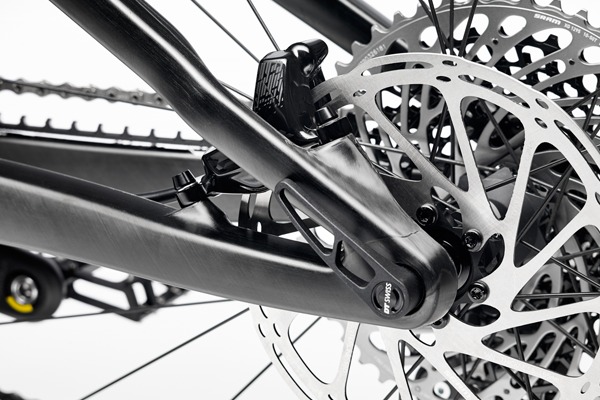
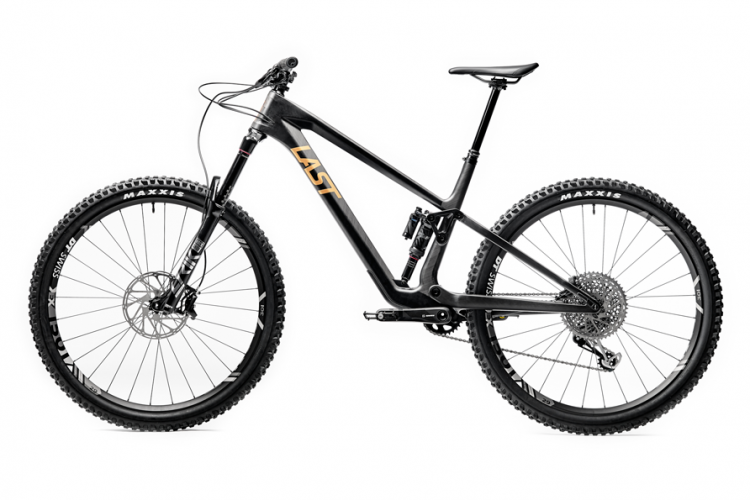


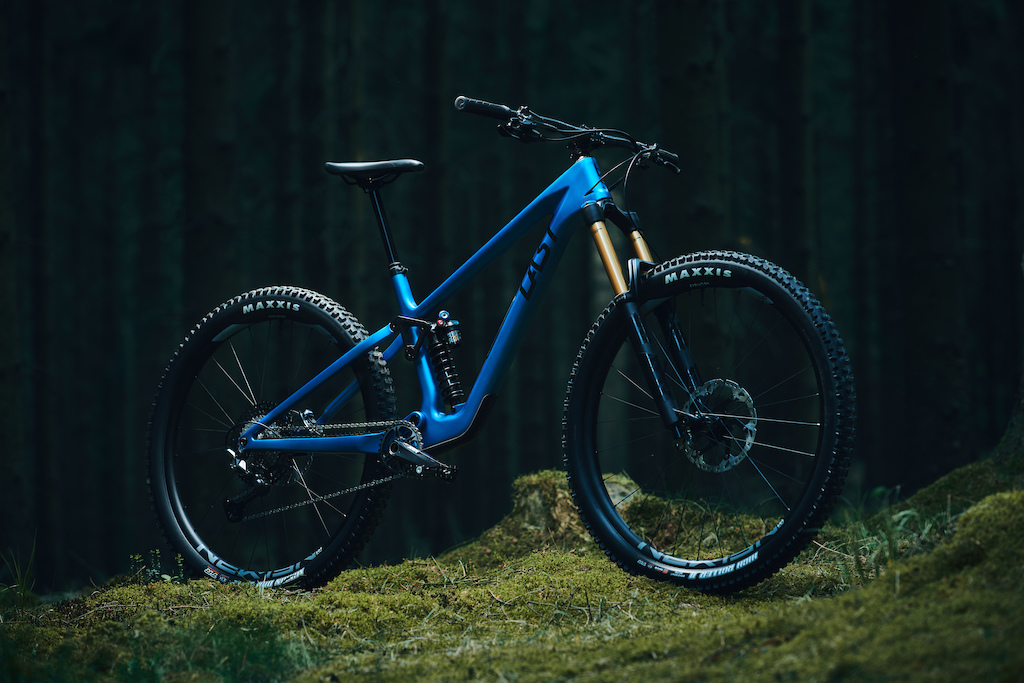

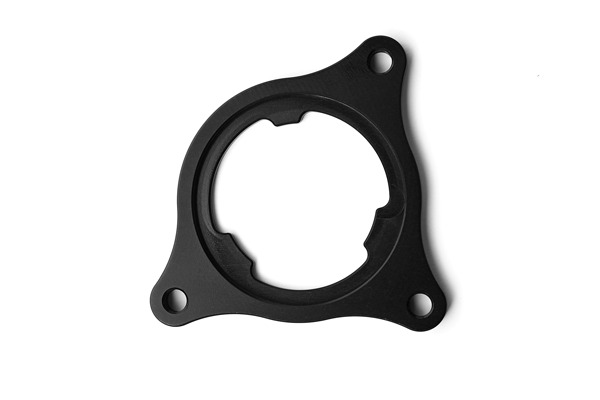
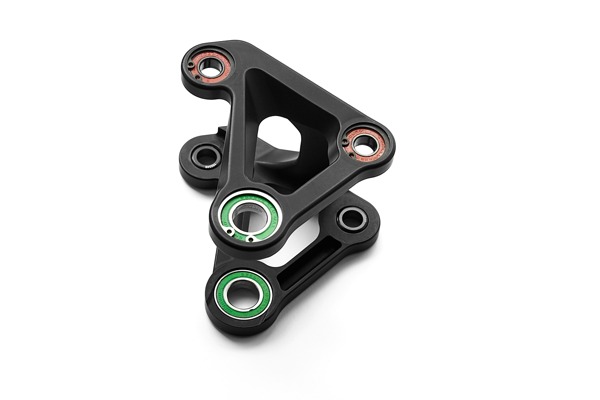



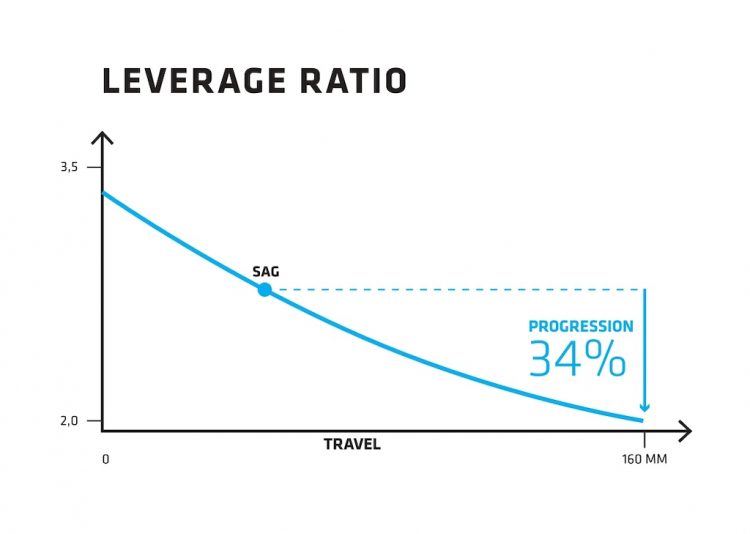




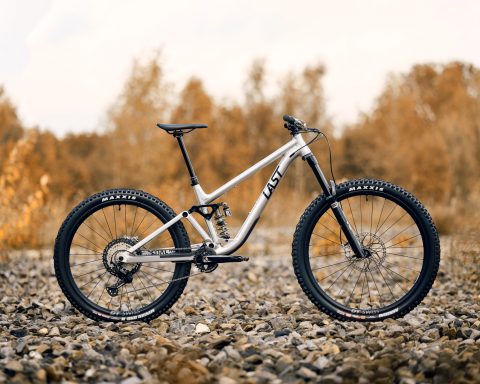



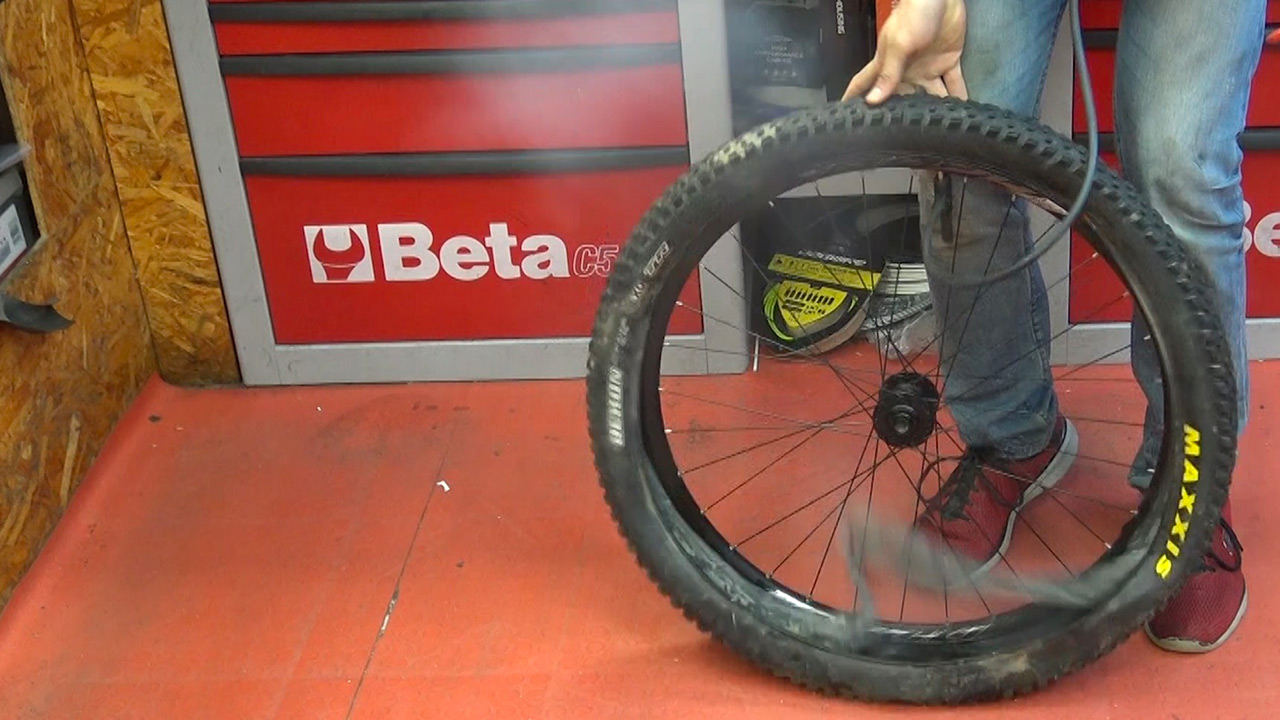





Spesso di serie trovi gomme di cartavelina per abbassare l'ago della bilancia.